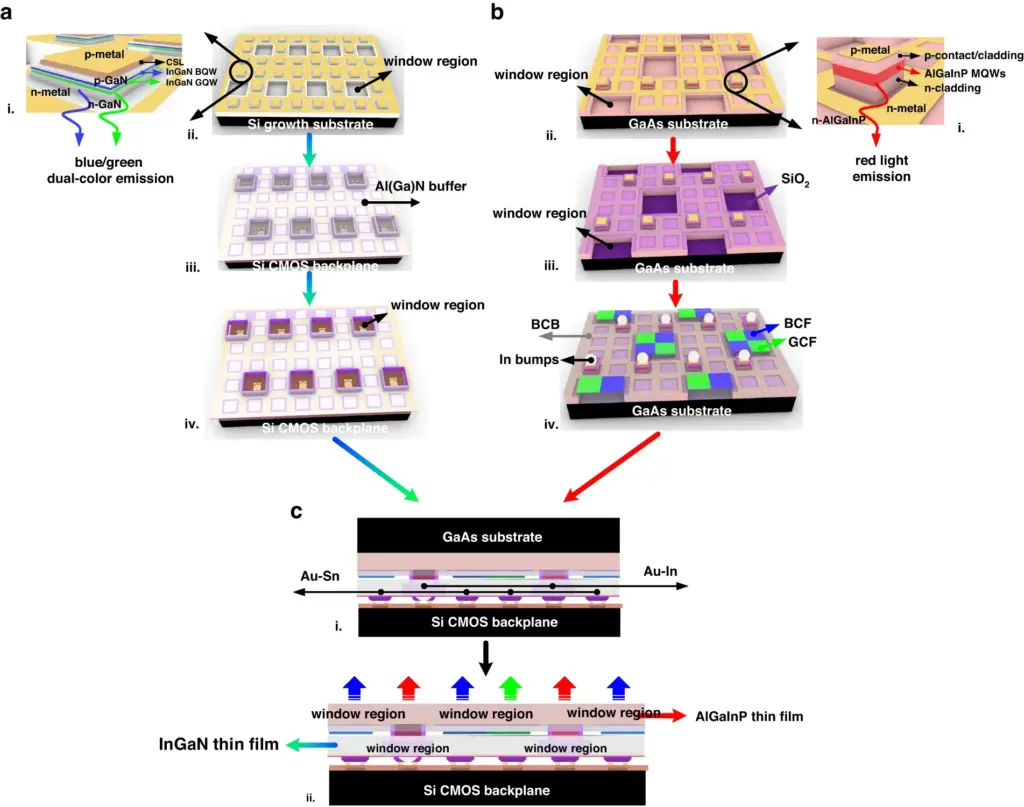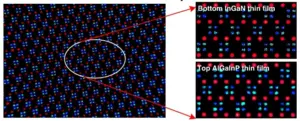Researchers at the Hong Kong University of Science and Technology (HKUST) have demonstrated a new technique to enable full-color MicroLED displays using heterogeneous integration of InGaN and AlGaInP semiconductor materials.
The HKUST team fabricated a prototype MicroLED microdisplay with 200 x 80 pixels and an ultra-high resolution of 391 pixels per inch. To achieve full color, they developed a double-layer display architecture integrating blue/green and red MicroLED arrays.
The blue/green MicroLED arrays were fabricated from GaN-on-Si wafers containing a specialized InGaN/GaN multi-quantum well structure in the active region. By tuning the operating current density, it was possible to balance the blue and green emission intensity. This eliminated the need for separate blue and green epiwafers.
Meanwhile, the red MicroLED arrays were fabricated separately on AlGaInP epiwafers. A key innovation was integrating these two monolithically fabricated arrays sequentially on a CMOS backplane using advanced flip-chip bonding techniques.
The resulting double-layer thin-film display structure transmits blue and green light through transparent window regions patterned on the top AlGaInP array. Red emission comes from the active layer in the windows of the bottom InGaN array.
This heterogeneous integration approach allowed the team to leverage the high efficiency of InGaN and AlGaInP materials for blue/green and red emission respectively. According to the researchers, it simplifies fabrication compared to existing techniques like multi-stack wafer bonding or color conversion.
Using these advances, the team successfully displayed full color images on the microdisplay with 109% sRGB color gamut at 300 nits brightness. They believe enhancing the pixel drivers and optimizing the GaN dual-color epiwafers can improve color mixing and achieve over 4000 nits brightness.

Reference
Qi, L., Li, P., Zhang, X., Wong, K. M., & Lau, K. M. (2023). Monolithic full-color active-matrix micro-LED micro-display using InGaN/AlGaInP heterogeneous integration. Light: Science & Applications, 12(1), Article 1. https://doi.org/10.1038/s41377-023-01298-w

